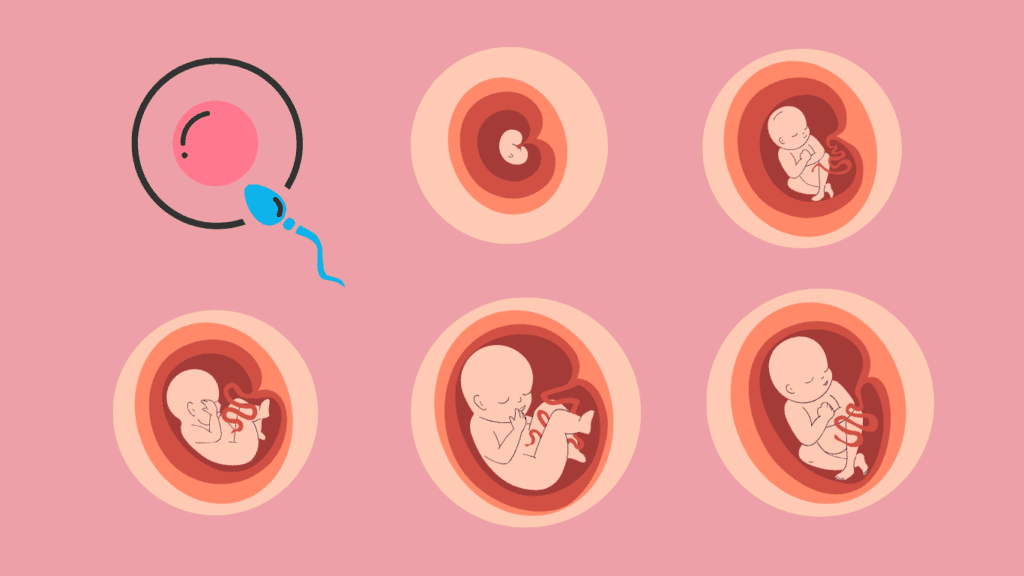Period vs Implantation Bleeding
When it comes to spotting or bleeding between periods, it can be confusing and sometimes worrisome. Two common causes of such bleeding in women of reproductive age are menstrual bleeding and implantation bleeding. Though they can appear similar, they have very different causes. Knowing the differences can help you understand your body better and potentially determine if you might be pregnant.
Contents
1. What is Menstrual Bleeding?
Menstrual bleeding is a natural part of the menstrual cycle. Each month, the female body prepares for a potential pregnancy. The lining of the uterus thickens to create a nurturing environment for a fertilized egg. If no fertilization occurs, this lining sheds, resulting in menstrual bleeding.
Key Characteristics of Menstrual Bleeding:
- Color: Menstrual blood is often bright to dark red and may contain small clots.
- Duration: Typically lasts 3-7 days.
- Flow: Starts light, becomes heavier in the middle days, and tapers off.
- Timing: Usually happens 14 days after ovulation in a regular cycle.
2. What is Implantation Bleeding?
Implantation bleeding is an early sign of pregnancy. It occurs when a fertilized egg attaches to the uterine lining. As the embryo implants, it may cause some light spotting or bleeding.

Key Characteristics of Implantation Bleeding:
- Color: Often light pink or brownish and rarely bright red.
- Duration: Usually lasts only 1-3 days.
- Flow: Very light; often just a few drops or a mild stain on underwear.
- Timing: Generally happens 6-12 days after ovulation, or a few days before your expected period.
3. Key Differences Between Period and Implantation Bleeding
| Feature | Menstrual Bleeding | Implantation Bleeding |
|---|---|---|
| Color | Bright to dark red, sometimes clotted | Light pink or brown, rarely red |
| Duration | 3-7 days | 1-3 days |
| Flow | Starts light, becomes heavier | Very light, often just spotting |
| Timing | 14 days after ovulation (typical cycle) | 6-12 days after ovulation |
| Symptoms | Cramps, bloating, mood swings | Mild cramping, no PMS-like symptoms |
4. How to Tell if It’s Period or Implantation Bleeding?
While menstrual and implantation bleeding can look similar, a few distinguishing features might help:
- The volume of Blood: Implantation bleeding is much lighter.
- Timing in Your Cycle: If you notice bleeding a few days before your period is due, it could be implantation bleeding.
- Color and Texture: Menstrual blood is usually red and can be clotted, while implantation bleeding is often brownish or pink without clots.
5. Other Signs to Look Out For
If you’re trying to determine if you’re pregnant, here are some additional early pregnancy symptoms that may accompany implantation bleeding:
- Mild Cramping: Unlike menstrual cramps, implantation cramping is usually milder.
- Breast Tenderness: Breast sensitivity often increases in early pregnancy.
- Nausea or Food Aversions: Some women start experiencing nausea as early as two weeks after conception.
- Fatigue: Early pregnancy hormones can cause tiredness.
6. When to Take a Pregnancy Test?
If you suspect implantation bleeding, it’s best to wait until the day after your missed period to take a home pregnancy test. This will give your body enough time for the placenta to produce detectable levels of the hormone hCG.
A pregnancy test is a simple yet essential tool that detects human chorionic gonadotropin (hCG) in urine or blood, indicating pregnancy. These tests are widely available, offering convenience and quick results.
Types of Pregnancy Tests
- Home Pregnancy Tests (HPTs) – These urine-based tests are affordable and easy to use. They provide results within minutes and are most accurate when taken a few days after a missed period.
- Blood Tests – Conducted in a medical setting, blood tests detect hCG earlier than urine tests and provide precise results. There are two types:
- Qualitative hCG Test – Confirms pregnancy with a simple yes or no.
- Quantitative hCG Test – Measures the exact amount of hCG, helping track pregnancy progression.
7. When to See a Doctor
If you’re uncertain about the cause of your bleeding, consider seeing a healthcare provider, especially if:
- Bleeding is unusually heavy or accompanied by severe pain.
- You experience unusual symptoms that you don’t normally have with your period.
- You have a positive pregnancy test but continue to have bleeding, as this could indicate an issue that needs medical attention.
Summary
Understanding the differences between menstrual bleeding and implantation bleeding can ease some anxiety and provide clarity, especially if you’re hoping to conceive. At the time of implantation, bleeding is a common early sign of pregnancy, generally not all women experience it. By knowing what to look for and when to take a pregnancy test, you can better understand what’s happening in your body

